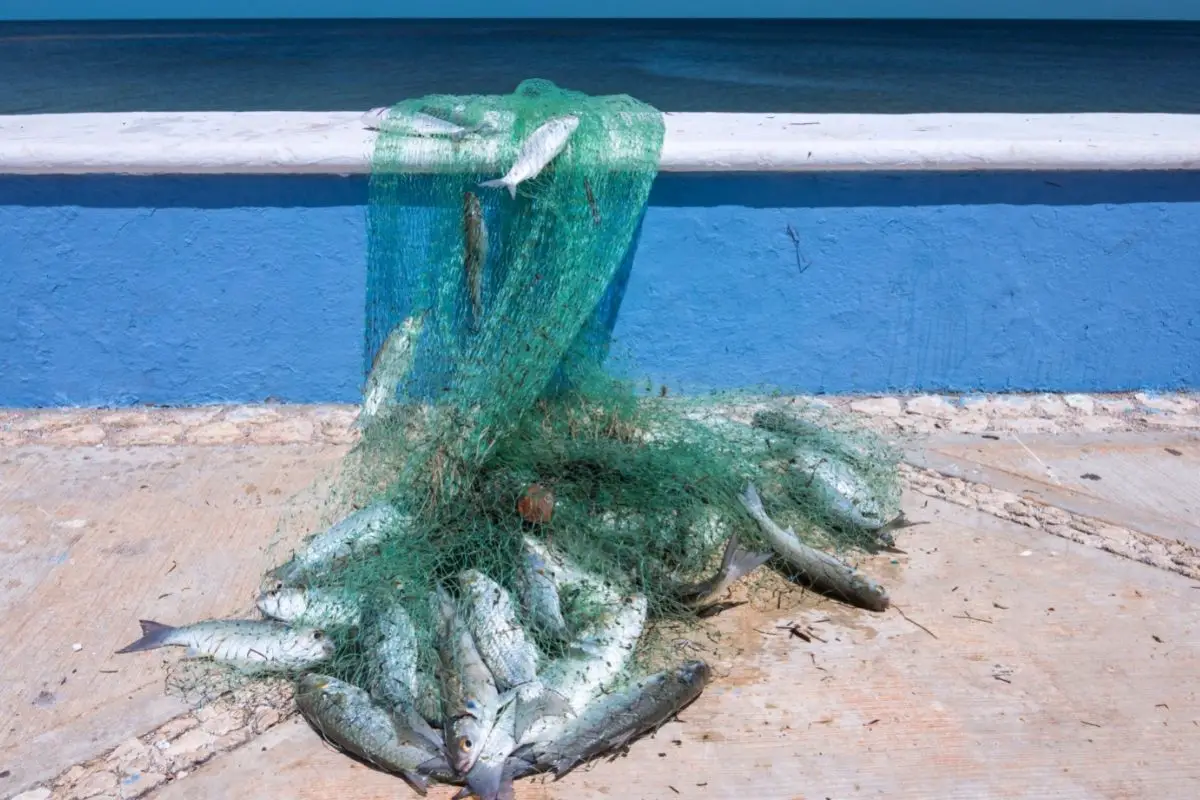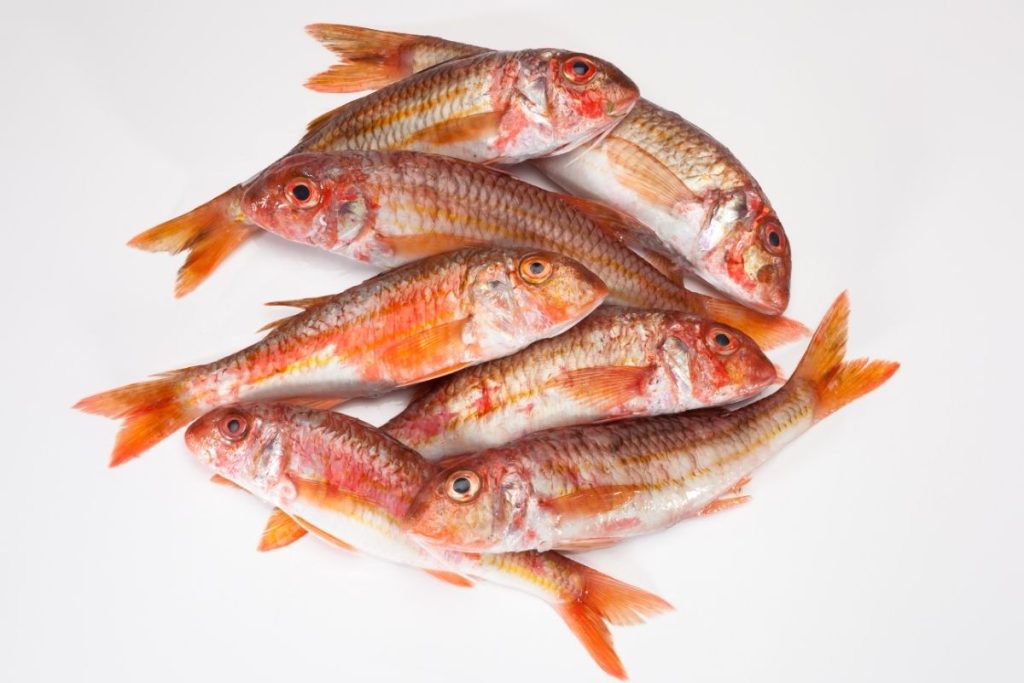Mullets are fish that can be typically found in warm coastal waters as well as canals and rivers.
While they look similar to bass or catfish, they are much smaller which can make them fun to go after and catch.
The mullet has a long slender body and a distinctive head shape so you should be able to spot it once it comes to the surface.
There are several different methods to approach when trying to catch a mullet and you may want to try several of them.
Mullets are usually caught using bait such as shrimp or worms though chicken feed and even bread can also work.
However, another method is to use a jigging rod with weighted lures that attract a lot of fish which includes the mullet.
There can be an abundance of mullets if you look in the right places, especially during the summer months.
Black mullet typically swims into estuaries around the Atlantic seaboard as they forage for algae. They could also be enticed by your baited hook or cast net.
Where To Find Mullet
Mullet can be found typically in warm coastal water including piers, bays, harbors, and estuaries, though the fish can also be found in freshwater.
As the weather turns cooler, black mullets retreat to canals, rivers, and even pocket coves where you could find them in large schools.
The mullet are frequent jumpers which makes them relatively easy to spot.
The time of year is also important, specifically for that warm weather. If it is a gray mullet you are after then try the summer and going into fall so May to October.
If it seems unseasonably warm then you may get lucky and find some mullet that is ready to be caught.
Getting The Bait Ready
Once you have picked your spot for catching mullet, you need to prepare your bait to lure the mullet. You will need a bucket to make sure you have enough bait to get you through a long session which could last for several hours.
Mash
One bait you can try is known as mash which is chicken feed. You can mix this up with some oatmeal and a small amount of water, enough that you can roll it into dough balls so it will stay in the water for a short period of time.
You do not want the mash to be too thin either as it will simply drift down in the water within seconds. Essentially, the mash should dissolve gradually as you drop it in to attract the mullet as many of them can be enticed at once.
Once your mash begins dissolving, you can cast your rig out. Locate where the mash has dissolved and use some jerk bait or white plastic bait for each hook to plant right in the middle.
A multi-hook rig works well so maintain your leader and the hooks with the plastic baits in the mash bucket, you can allow them to stick to the mix with your line to add a bit more chum.
The mash can almost work too well as the mullet can go for it. Be ready on the draw with your hook as you may be called to action quicker than you anticipated.
Try to be gentle if you do get a bite as mullets can be typically feisty and they will try to wriggle away.
Fresh Bait
If chicken feed and oatmeal seem a bit too tedious, you can find some meaty bait that will do a job too. Tiny ragworms or strips of fresh fish can prove useful, specifically mackerel, pilchard, and herring.
Even fat-back bacon can be used but soft-backed crabs, shrimps, and peeled prawns should also be used in coastal areas if they are readily available.
In canals and rivers, you may want to be more diverse and there are a wide variety of options.
Some more rudimentary choices include earthworms and maggots that you may already have a ready supply of at home. Leftovers such as sweetcorn or boiled macaroni can be used too.
If you wanted to treat them to something sweet then chop up some peeled banana pieces and dip the cubes in some honey.
Then again, a really useful bait can be just plain simple white bread, especially if you have an abundance of it.
As mullets tend to eat algae there is not much need for a whole grain or artisan loaf, just some sandwich bread will do.
Just like you would with some mash, create an area for the mullet to be attracted to by adding some small pieces of bread first and making a line for the mullet to follow.
Chuck in a few slices and create a trail with a few smaller pieces so once they have been attracted, you are ready with your hook to reel them in.
If you do want to use bread as a specific bait on your hook and not just to lure them then make sure it will remain in place.
Use a large chunk from the middle of a slice then fold it. You want to pinch on the crease quite firmly to put the hook through to make it a secure hold.
That should be enough for a cast and the bread bait should remain on the hook.
How To Catch Mullet

Tyger Leader is reader-supported and may earn a commission when you book or purchase using our links. Learn more about our affiliate disclaimer here.
If you want an effective, and relatively easy way, of catching mullet then use a cast net when you can find a large school.
However, the most rewarding way to catch a mullet is by a hook even if the fish does not bite conventionally as it tends to nibble.
Ideally, find a roadside area to access shallow waters where mullets can concentrate together. Here, you can lay some mash to get the mullet lively enough.
Fishing rigs that are ideal for mullet tend to be #2 or #3 hooks (though you can go much higher) which are tied around eight to ten inches apart.
You can use a fishing line and afloat as long as it is around four inches above that first hook and sinkers if you are using them near the bottom hook.
You need to pay attention to the float as mullets tend to nibble so watch out for tiny movements to get ready with the hook.
Tips To Catch Mullet
As mullets have such great vision and are so quick, it is best to avoid using a cast net even in clear, freshwater unless there is a large school present.
If you do want to catch them properly then the hook and line are the best way. Do not get too distracted by what several mullet fishermen may tell you, if you are comfortable using a certain pole or rod then just use that one.
Keep your rig simple as it is not wholly necessary to go too elaborate, they may only need bread for bait after all. The more important factor is the time of year so stick to the warmer months.
Knowing that they feed on algae is also crucial as the rising tide can bring them in closer, especially in a harbor.
Final Thoughts
Catching mullets can be a really rewarding activity. Not just for the different methods and baits it takes to catch them but for how tasty they are when cooked well.
If you just want a fish to catch for sport then mullet is an excellent choice as they can be quite tricky unless you tempt them accordingly.
Mullet can be quite underrated as a sport fish because they can be so temperamental. Some days you can catch a fair few while on others they seem very elusive.
If you are using a line and hook, remember that mullets are small and they can be feisty. They will try to escape so take your time reeling them in, do it carefully and slowly for best results when catching mullet.



